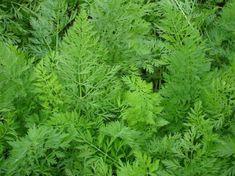
BASF’s carrot sclerotinia monitoring system is showing early germination of sclerotia, prompting the firm to issue a warning to growers.
The wet and humid conditions have favoured Alternaria and Cercospora, allowing sclerotinia to germinate within four weeks of drilling - two weeks sooner than last year.
ADAS also reports that there are still some air-borne spores being produced from sclerotia of Sclerotinia present in over-wintered arable crops. This provides another opportunity for the disease to spread to carrots and other vegetables from nearby fields.
Growers are being advised to inspect their crops now in order to guide their timely fungicide use, according to ADAS and BASF. In areas with Sclerotinia, main crop carrots should be considered at risk from four to six weeks after drilling.
According to ADAS, carrots sown in mid-April have generally reached the six to eight leaf stage with 100 percent ground cover in the beds. The first leaves are now senescing and Sclerotinia infection may soon start to appear. ADAS is recommending that fungicides should be applied at this stage to protect the foliage against the high disease risk.
BASF advocates the use of Signum, which it says has outperformed other fungicides for the control of major carrot diseases Sclerotinia, Alternaria and Powdery Mildew. It also showed good control of Cercospora leaf blight in trials.
Signum is recommended in carrots as a protectant spray or at the first signs of disease at a dose rate of 0.75 to 1 kg/ha in 200-900 litres of water. Two applications can be made to the crop. It is subject to LERAP B and has a harvest interval of 14 days in carrots.